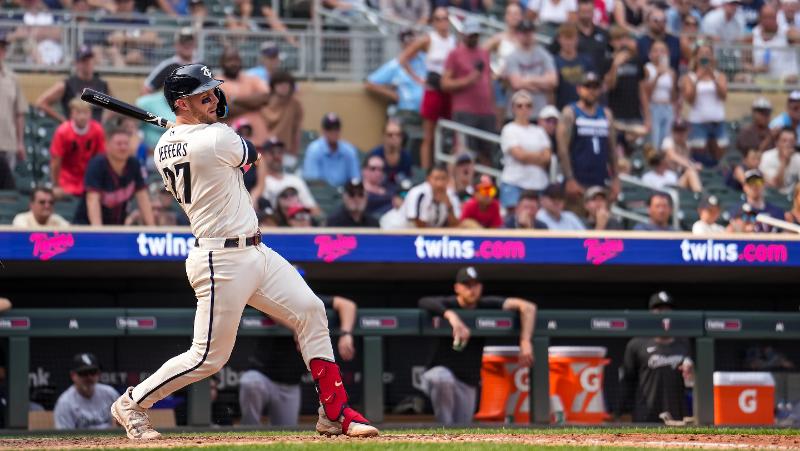In an attempt to reverse declining attendance, Major League Baseball (MLB) took a gamble this season by implementing major rule changes. From shortening game times to adding excitement to the game, MLB aimed to attract a new generation of fans. This article explores the impact of these changes on attendance, fan experience, and the future of the sport.
MLB's Effort to Attract New Fans
How MLB made changes to the game to appeal to a younger audience.
Major League Baseball has been facing a decline in attendance in recent years, particularly among younger audiences. To combat this trend, MLB took a bold step by implementing several rule changes aimed at attracting new fans.
These changes included shortening game times and increasing the on-field excitement. By introducing a clock to regulate the pace of the game, the league aimed to make games more fast-paced and engaging for viewers who may have shorter attention spans. They also looked to increase the frequency of home runs and other exciting plays to keep fans entertained throughout the game.
With this new approach, MLB hopes to create a more accessible and enjoyable experience for fans, particularly younger generations who are accustomed to faster and more action-packed events. By adapting to the changing preferences of the audience, MLB aspires to build a new fanbase that will support the sport for years to come.
The Impact of Rule Changes on Attendance
Exploring the correlation between rule changes and increased attendance.
One of the key objectives of the rule changes implemented by MLB was to reverse the declining attendance seen in previous seasons. And it appears that the gamble has paid off: this season, MLB witnessed a significant increase in attendance compared to previous years.
The shorter game times brought in by the new rule changes have been particularly well received by audiences. People appreciate the opportunity to enjoy a full baseball game without having to invest several hours of their time. The convenience of shorter games has made attending live games more accessible and appealing to fans, leading to increased attendance numbers across the league.
Additionally, the on-field excitement has played a vital role in attracting fans. The emphasis on increasing home runs and other exciting plays has injected a new level of energy into the sport. Fans are enthusiastic about witnessing thrilling moments during games, which motivates them to attend games more frequently. The rule changes have successfully made baseball a more captivating and engaging experience, drawing people back to the stadiums.
External Factors Contributing to Increased Attendance
Considering other factors that may have had a positive impact on attendance figures.
While the rule changes were a significant factor in the increased attendance, it is important to consider other external factors that may have contributed to this positive outcome.
For instance, the World Baseball Classic, held just before the MLB season started, generated a surge of interest in the sport. The tournament, which only takes place once every four years, captivated the attention of fans worldwide and heightened their enthusiasm for the upcoming season.
Moreover, the overall rise in attendance for live events and performances across various sectors has been observed. This trend indicates a general inclination of people to engage in experiences outside their homes. Concerts, music festivals, and other live performances have reported high turnouts, reaffirming the growing desire for communal experiences. In this context, attending a baseball game aligns with the prevailing trend of seeking out lively, shared experiences.
Future Prospects: Building a New Generation of Fans
How MLB hopes to create a lasting impact and sustain its fanbase.
Ultimately, the changes implemented by MLB go beyond just increasing attendance in the short term. There is a long-term goal of cultivating a new generation of fans who will carry the sport forward.
By making games more accessible, MLB aims to create a family-friendly environment that fosters the love for baseball among young audiences. Families can now enjoy watching a game without worrying about late nights or excessively long playtimes. This, in turn, helps inculcate a passion for the sport in children at a young age.
Furthermore, as more fans experience the increased competitiveness and excitement of the games, their interest and dedication are expected to deepen. This cultivation of a dedicated fanbase will provide stability for the future of baseball, ensuring it remains a popular and beloved sport for generations to come.
Conclusion
In an effort to attract new fans and reverse the decline in attendance, Major League Baseball (MLB) took a bold and innovative approach by implementing rule changes to make the game more exciting and accessible. These changes, which included shorter game times and an emphasis on thrilling plays, have resulted in a significant increase in attendance and a more engaging experience for fans.
MLB's adaptations have not only succeeded in attracting a younger audience but have also created a foundation for a lasting impact on the sport. By making games more appealing to families and creating a fan-friendly environment, MLB hopes to build a new generation of passionate fans who will continue to support the sport in the years to come. With attendance on the rise and fans embracing the changes, the future looks promising for Major League Baseball.

